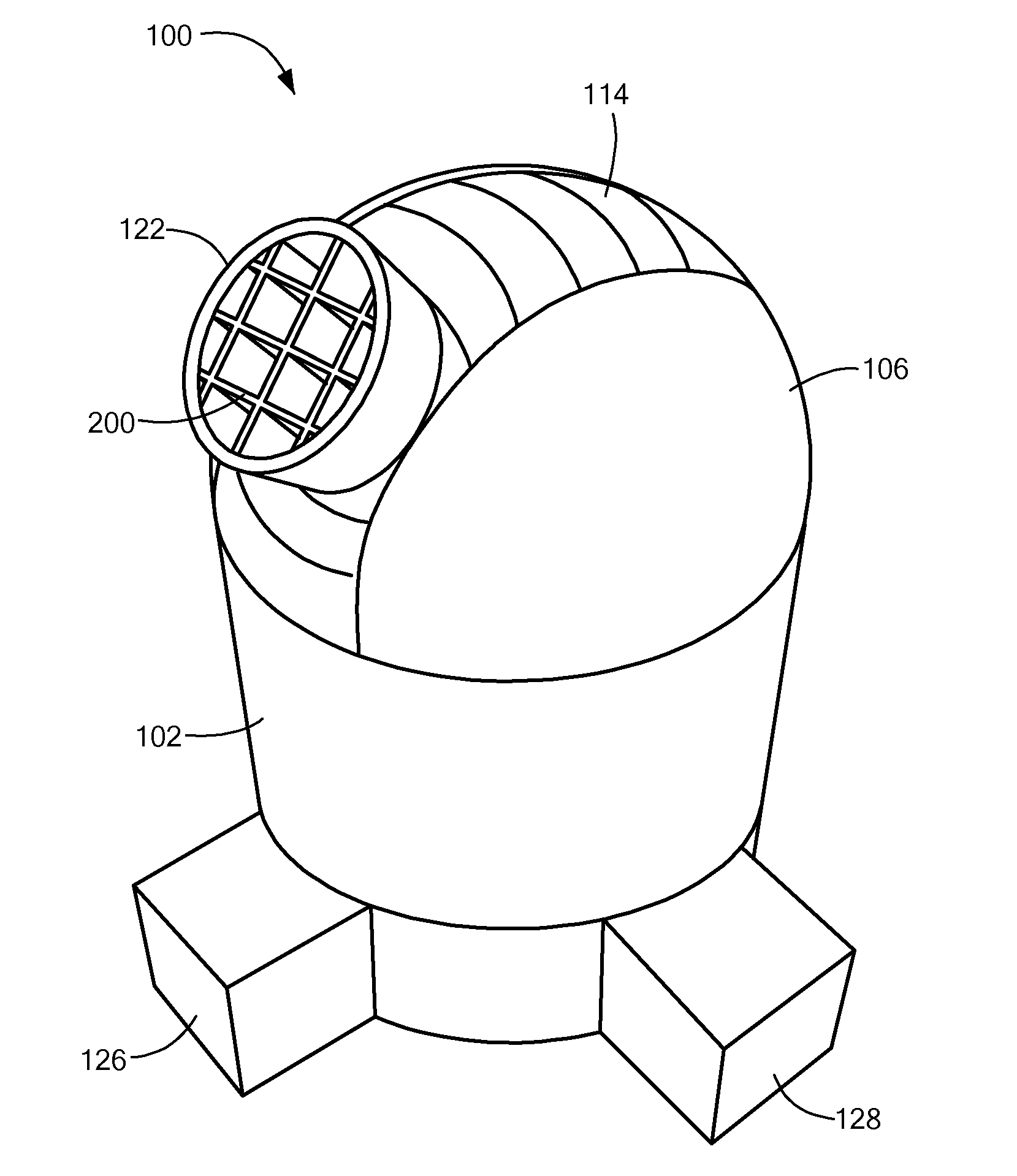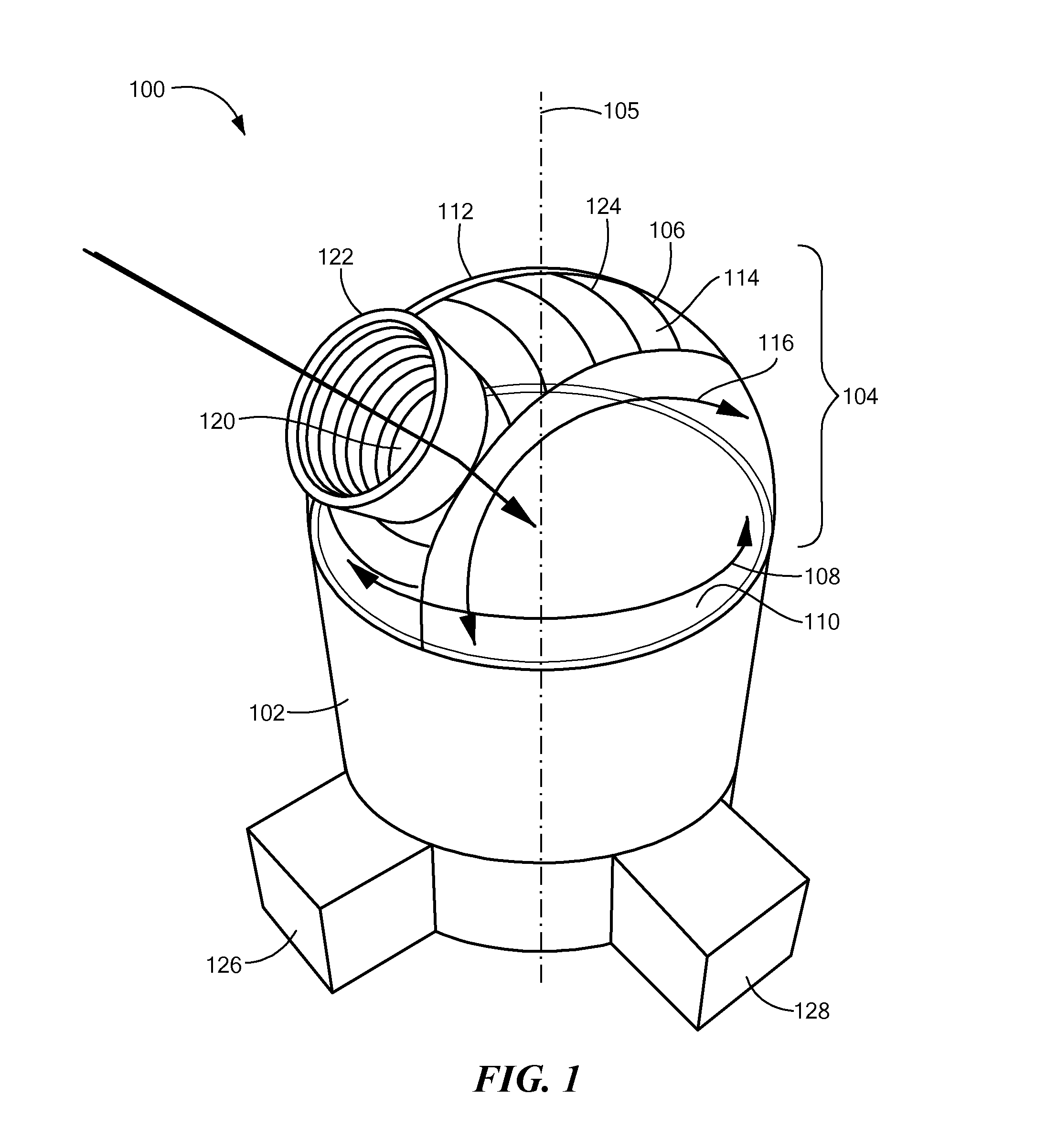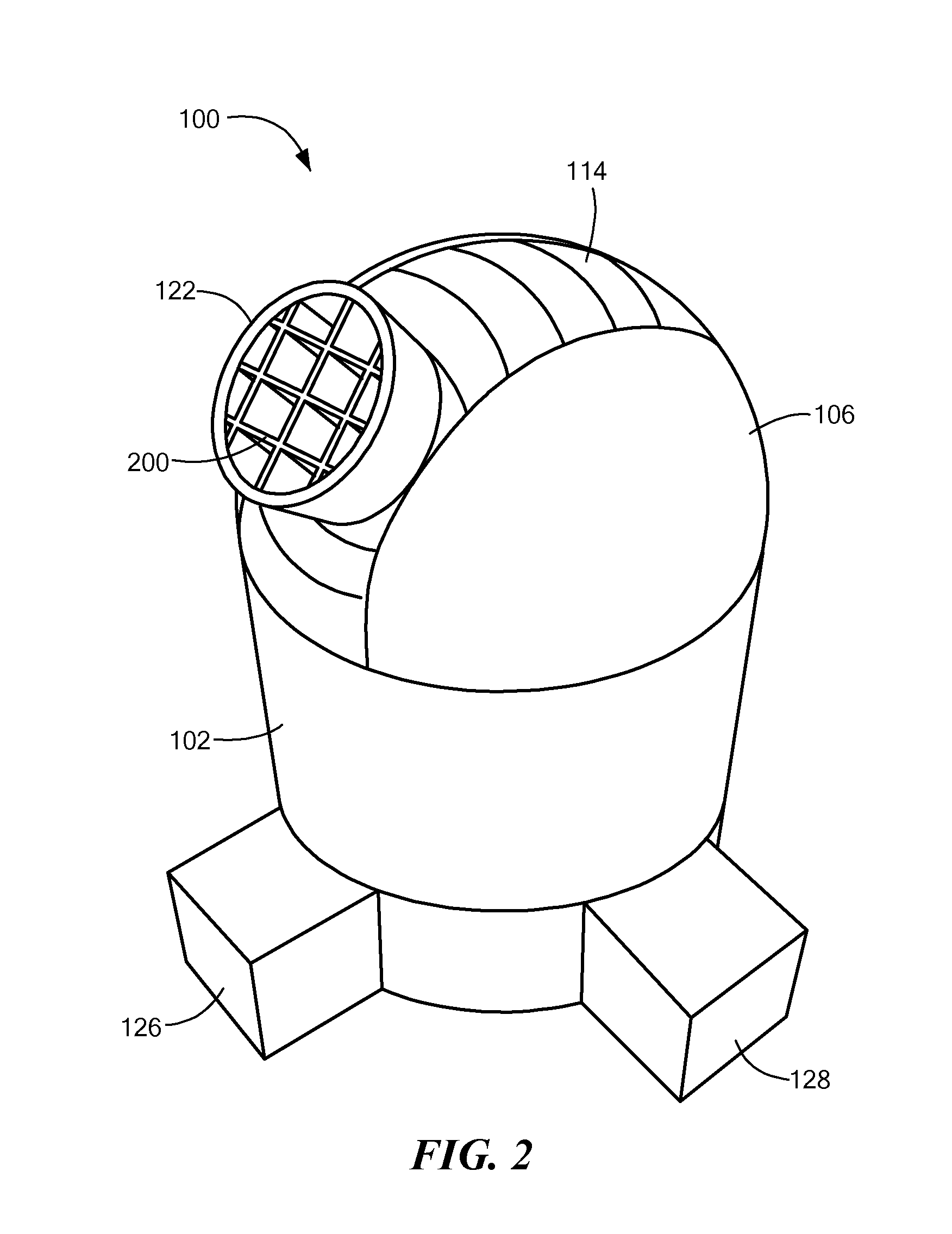Navigation System with Monocentric Lens and Curved Focal Plane Sensor
a technology of focal plane sensor and navigation system, which is applied in the field of optical navigation system, can solve the problems of limited number of navigational stars that may be used, required precision, and substantial problems
- Summary
- Abstract
- Description
- Claims
- Application Information
AI Technical Summary
Benefits of technology
Problems solved by technology
Method used
Image
Examples
Embodiment Construction
[0007]An embodiment of the present invention provides a navigation system. The navigation system includes a monocentric objective lens and a first curved image sensor array. The first curved image sensor array is disposed parallel to, and spaced apart from, the lens. The curved image sensor array includes a plurality of light-sensitive pixels on a surface of the sensor array. The surface of the sensor array having the light-sensitive pixels faces toward the lens.
[0008]The lens may have a focal length. The first image sensor array may be spaced apart from the lens by about the focal length. Thus, each of the pixels on the sensor array may be spaced apart from the lens by about the focal length.
[0009]The lens may have a field of view. The first image sensor array may be sized to receive light from less than the entire field of view of the lens. In some embodiments, the first image sensor array may be sized to receive light from less than about 80% of the field of view. In some embodim...
PUM
 Login to View More
Login to View More Abstract
Description
Claims
Application Information
 Login to View More
Login to View More - R&D
- Intellectual Property
- Life Sciences
- Materials
- Tech Scout
- Unparalleled Data Quality
- Higher Quality Content
- 60% Fewer Hallucinations
Browse by: Latest US Patents, China's latest patents, Technical Efficacy Thesaurus, Application Domain, Technology Topic, Popular Technical Reports.
© 2025 PatSnap. All rights reserved.Legal|Privacy policy|Modern Slavery Act Transparency Statement|Sitemap|About US| Contact US: help@patsnap.com



